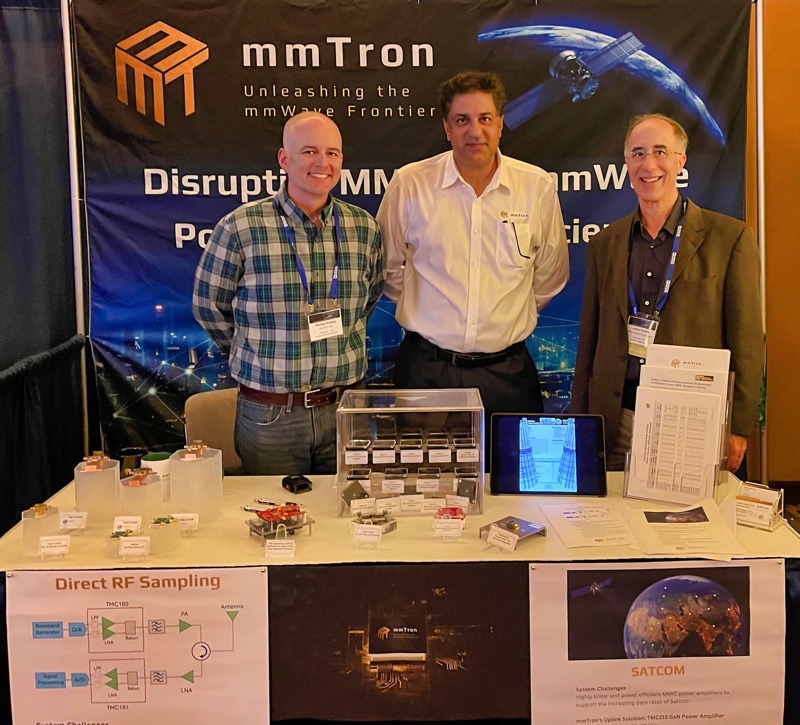
The IEEE BiCMOS and Compound Semiconductor Integrated Circuits and Technology Symposium (BCICTS) just completed its sixth annual conference, 15–18 October, in Monterey, Calif. BCICTS is the marriage of the Compound Semiconductor IC Symposium (CSICS) and the Bipolar/BiCMOS Circuit and Technology Meeting (BCTM), which ran for 42 and 35 years, respectively, before joining to start BCICTS.
mmTron was one of seven companies exhibiting this year, along with five sponsors, to help underwrite the event. Co-founders Seyed Tabatabaei and Mona Molaasgari and Mike Roberg, Engineering Fellow, attended to take in the conference papers and share mmTron’s differentiated strategy for serving the mmWave market.
Mike has long served on the conference technical program committee (TPC) and served as the BCICTS publications chair this year. Next year, he’ll chair the TPC. His association with BCICTS gives him a good perspective on the technology and industry, so we asked Mike to share his impressions of the event:
“BCICTS attendees were greeted by beautiful weather and a fantastic technical program in Monterey.
The three excellent plenary talks highlighted the future directions of compound semiconductor technology. Tom Kazior (DARPA) gave an excellent talk on how 3D heterogeneous integration will be a key enabler for next generation RF systems. Building on this concept, Shahriar Shahramian (Bell Labs) discussed Bell Labs’ research efforts in E- and D-Band phased array development, which is enabled by glass interposer technology. Umesh Mishra (UCSB) wrapped up the plenary session with an excellent talk discussing how N-polar GaN offers significant promise for improving mmWave power density, which is becoming a bottleneck for many applications.
The exhibitor reception, held Monday evening, enabled the attendees to have substantive technical conversations with one another, so was well attended. With some 170 attendees, BCICTS is a smaller conference, which makes the engagement opportunities unique for exhibitors. Most attendees are directly involved with IC design, so the discussions are typically technical and detailed, which often identifies unique business opportunities for the exhibitors.
It was clear from the conference that mmWave systems are a hot topic. The challenges seemed to consistent across all the presented papers: consumed and dissipated power needs to be reduced while linearity and output power are increased. Oh, and don’t forget the integration challenges at mmWave, making a phased array, for example!
While these challenges are quite difficult, they are favorable for mmTron’s future due to our mmWave IC design expertise, which leads to products with world class power, power-added efficiency, and linearity. As GaN nodes continue being developed for mmWave (e.g., STARRY NITE, a program on the microelectronics roadmap of the Office of Undersecretary of Defense Research & Engineering), mmTron is well-positioned to offer GaN MMIC products exceeding 100 GHz with output power not previously achievable.
Fraunhofer’s presentation on advanced mHEMT technologies was one of the papers that was particularly impressive. It achieved MMIC amplifier performance beyond 700 GHz, which is astounding. They presented an integrated module for a synthetic aperture radar, with performance at 400 GHz, also impressive.
— Mike Roberg

at the mmTron exhibit at the 2023 BCICTS conference in Monterey.
